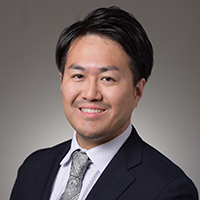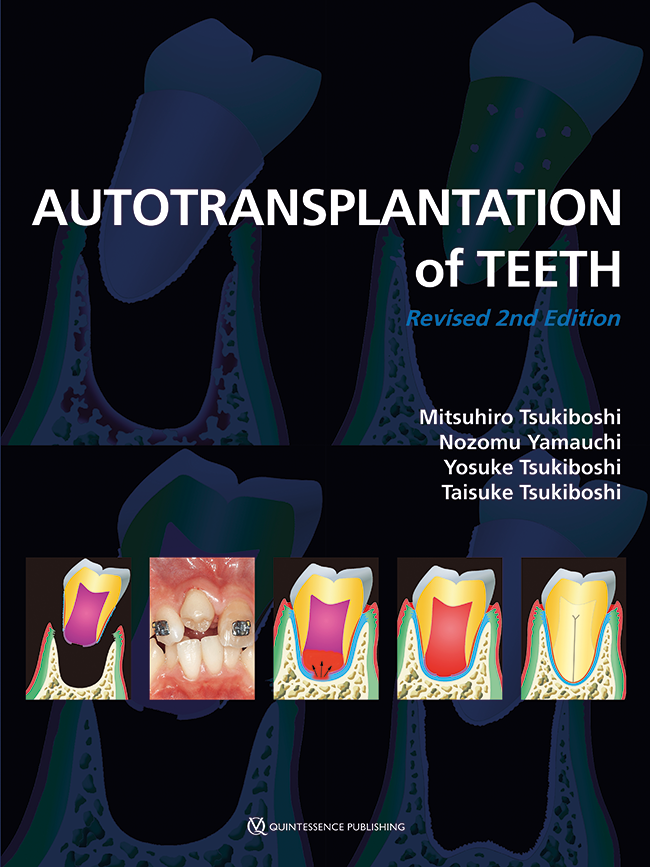International Journal of Periodontics & Restorative Dentistry, Pre-Print
DOI: 10.11607/prd.7325, PubMed ID (PMID): 392703306. Sep 2024,Pages 1-19, Language: EnglishTsukiboshi, Yosuke / Min, SeikoThis article introduces a novel 3D-printed guide for harvesting subepithelial connective tissue grafts (CTG) from the lateral palate. A digital simulation of CTG harvesting was conducted on a patient’s integrated model using a single incision technique. The model incorporates crucial anatomical information, such as the location of the greater palatine artery and palatal gingival thickness, ensuring that planned incisions avoid critical structures and that a donor tissue of sufficient size (length, width, thickness) is harvested. The guide was designed and 3D-printed to replicate the simulated procedures in the intraoral environment, enhancing surgical precision. During surgery, the CTG palate guide facilitates the successful harvesting of a graft of sufficient size, as preoperatively planned, without causing any complications. This study suggests that the CTG palate guide can reduce complications and surgical time while maximizing the dimensions of the donor tissue.
Keywords: Digital Technology, Computer-Aided Design (CAD), Three-Dimensional Printing, Case Report, Graft Harvesting, Surgical Guides
International Journal of Periodontics & Restorative Dentistry, 3/2023
Online OnlyDOI: 10.11607/prd.6393, PubMed ID (PMID): 37141084Pages e135-e140, Language: EnglishTsukiboshi, Yosuke / Gil, Jaime / Sola, Cristina / Min, Seiko / Zadeh, Homayoun HThe aim of the present study was to develop a 3D digital image-analysis method to quantitatively assess gingival changes after clear-aligner orthodontic therapy. Using teeth as fixed reference points, 3D image analysis tools have been used to quantify mucosal level changes after specific therapies. This technology has not been applied to orthodontic therapy, primarily because orthodontic tooth movement precludes using teeth as fixed reference points. Rather than superimposing the pre- and posttherapy volumes for the entire dentition, the methodology presented herein superimposed the pre- and post-therapy volumes for individual teeth. The lingual tooth surfaces, which remained unaltered, were used as fixed references. Intraoral scans taken before and after clear-aligner orthodontic therapy were imported for comparison. Volumes were created for each 3D image and were superimposed in a 3D image-analysis software that allowed quantitative measurements. The results demonstrated this technique's ability to measure very small changes in the apicocoronal position of the gingival zenith, as well as alterations of gingival margin thickness, following clear-aligner orthodontic therapy. The present 3D image-analysis method offers a useful tool for investigating the periodontal dimensional and positional changes that accompany orthodontic therapy.
International Journal of Esthetic Dentistry (DE), 3/2023
Clinical ResearchPages 292-305, Language: GermanIida, Yoshiro / Sheng, Sally / Tsukiboshi, Yosuke / Min, SeikoEin FallberichtZiel: Dieser Fallbericht mit mittelfristiger Nachbeobachtung möchte die erfolgreichen Resultate der Kammerhaltung mit deproteiniertem bovinen Knochenmineral (Anorganic Bovine Bone Mineral, ABBM) in Verbindung mit der Socket-Shield-Technik (SST) und sofortiger provisorischer Versorgung der Extraktionsstelle mit einem Ovate Pontic sowie der anschließenden verzögerten lappenfreien Implantatsetzung und Versorgung mit einem Sofortprovisorium im Oberkieferfrontzahnbereich demonstrieren.
Material und Methoden: Drei konsekutiv rekrutierte Patienten mit jeweils einem extraktionswürdigen oberen Frontzahn wurden nach folgendem Protokoll behandelt: Die Alveolarkammdimensionen wurden durch ein ABBM-Alveolentransplantat und die Belassung eines Wurzelsegments auf der labialen Seite der Alveole erhalten, um die nach Extraktionen auftretende Kammresorption zu minimieren. Unmittelbar im Anschluss wurde zur Unterstützung der Weichgewebekonturen ein festsitzendes Provisorium mit eiförmiger Basis in direktem Kontakt mit der Extraktionsstelle eingesetzt. Vier Monate nach der Extraktion erfolgte die lappenfreie Implantation, geführt durch eine am Computer konstruierte Operationsschablone, und die sofortige provisorische Versorgung des Implantats. Die definitiven Restaurationen wurden 4 Monate nach der Implantatinsertion eingegliedert.
Ergebnisse: Bei der Nachuntersuchung 2 Jahre nach der Implantatbelastung konnte der prothetische und implantologische Erfolg der Behandlung durch günstige ästhetische Ergebnisse und einem hohen Maß an Patientenzufriedenheit bestätigt werden.
Schlussfolgerungen: Das hier vorgeschlagene Protokoll mit einem Ovate Pontic als Sofortprovisorium in Verbindung mit einer Kammerhaltungsmaßnahme unter Verwendung von ABBM-Transplantat und SST, gefolgt von einer schablonengeführten, lappenfreien verzögerten Implantatsetzung mit provisorischer Sofortversorgung ist eine sinnvolle Methode zur Minimierung der Kammresorption und Verbesserung des ästhetischen Resultats.
International Journal of Esthetic Dentistry (EN), 3/2023
Clinical ResearchPubMed ID (PMID): 37462380Pages 278-291, Language: EnglishIida, Yoshiro / Sheng, Sally / Tsukiboshi, Yosuke / Min, SeikoA case reportAim: The present case report with medium-term follow-up aims to report on the successful outcomes of ridge preservation using anorganic bovine bone mineral (ABBM) combined with the socket-shield technique (SST) in conjunction with immediate ovate pontic provisionalization of the extraction site, followed by delayed flapless implant placement and immediate implant provisionalization in the rehabilitation of the maxillary anterior esthetic region.
Clinical protocol: Three consecutive patients with failing maxillary anterior teeth were treated with this protocol. The alveolar ridge dimension was preserved utilizing ABBM, combined with the retention of a partial tooth root segment in the buccal portion of the extraction socket, to minimize ridge resorption following tooth extraction. An immediate fixed provisional restoration with an ovate base in direct contact with the extraction site was fabricated and delivered immediately to maintain the soft tissue contour. At 4 months postextraction, flapless implant placement was performed via a computer-generated surgical guide, along with immediate implant provisionalization. Definitive restorations were delivered 4 months following implant placement.
Results: At the 2-year follow-up after loading, prosthetic and implant success was demonstrated, with a favorable esthetic outcome and a high level of patient satisfaction.
Conclusions: The immediate ovate pontic provisionalization in conjunction with ridge preservation combining ABBM and the SST, followed by flapless computer-guided implant placement with an immediate implant provisionalization protocol, as proposed in this article, offers a viable method to minimize alveolar ridge resorption as well as optimize esthetic outcomes.




